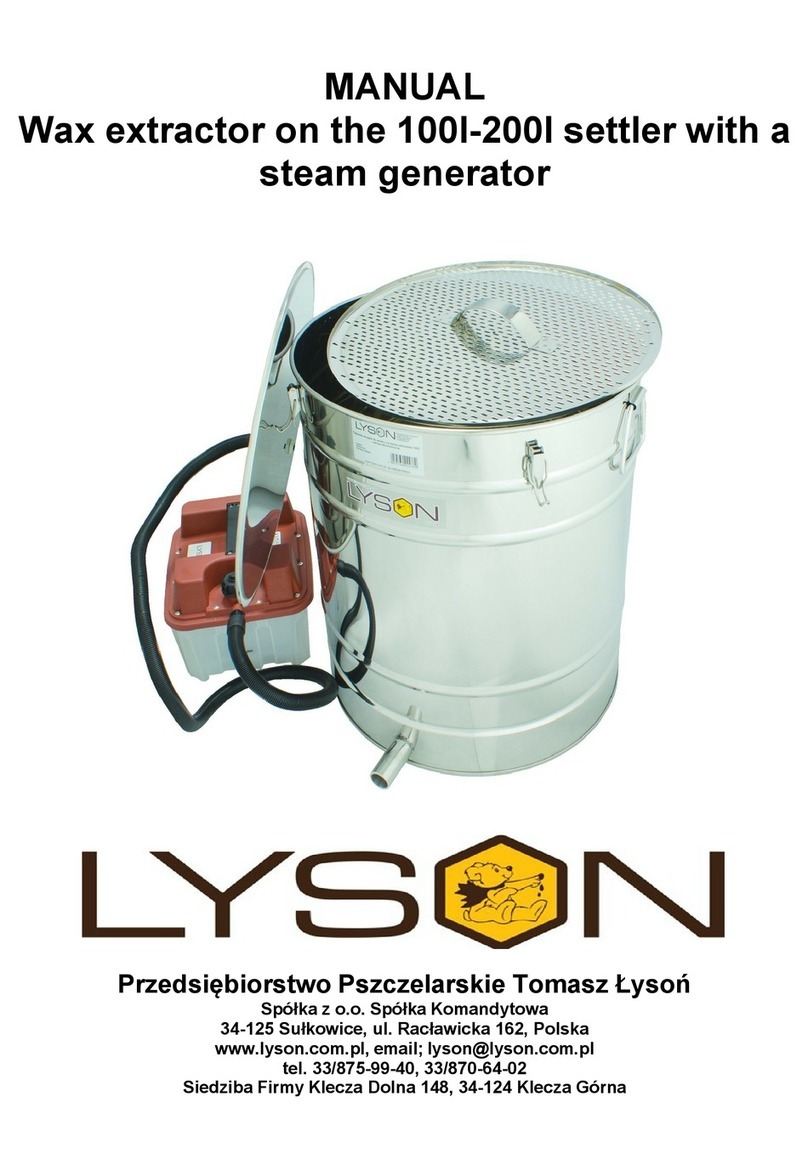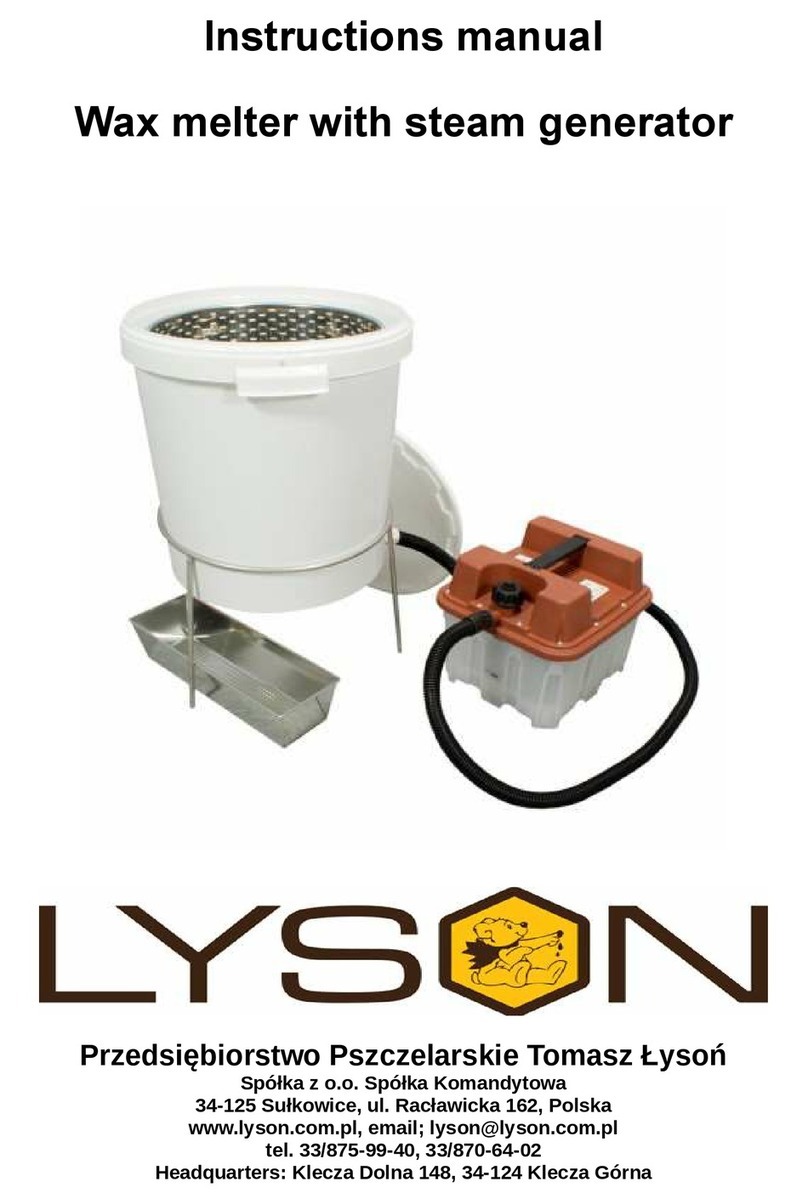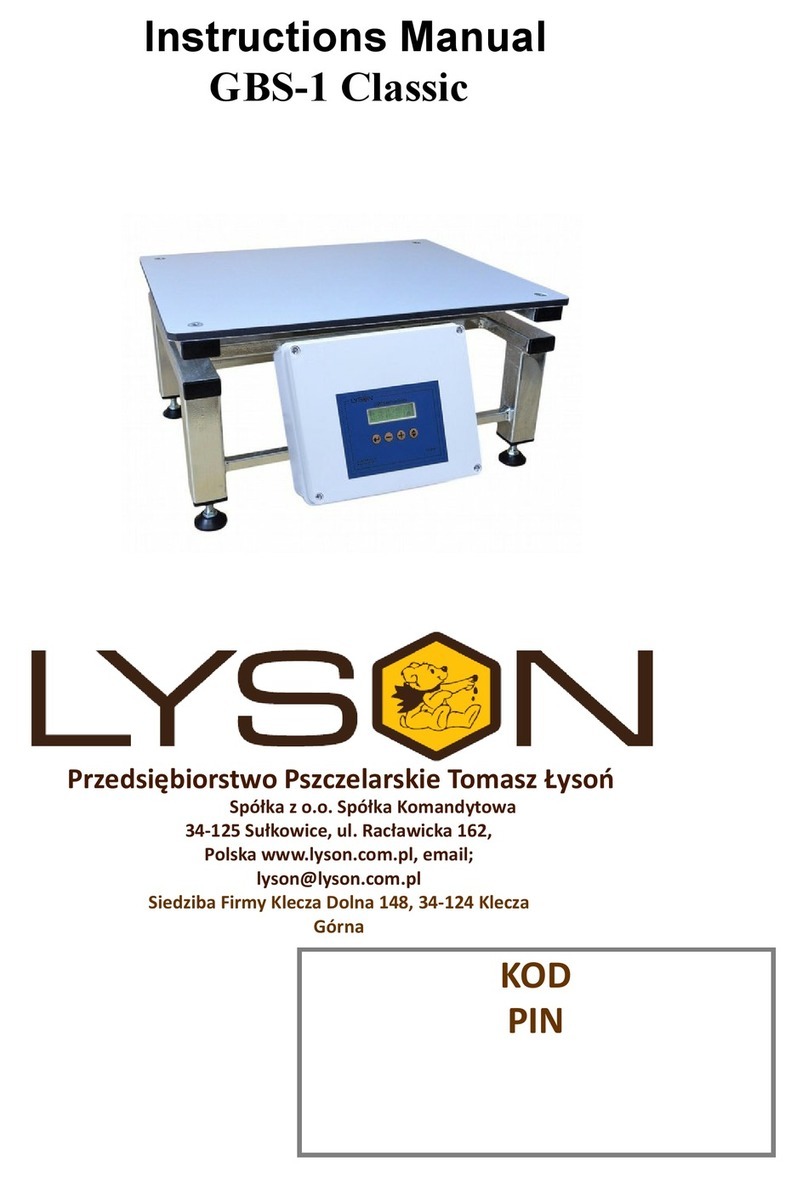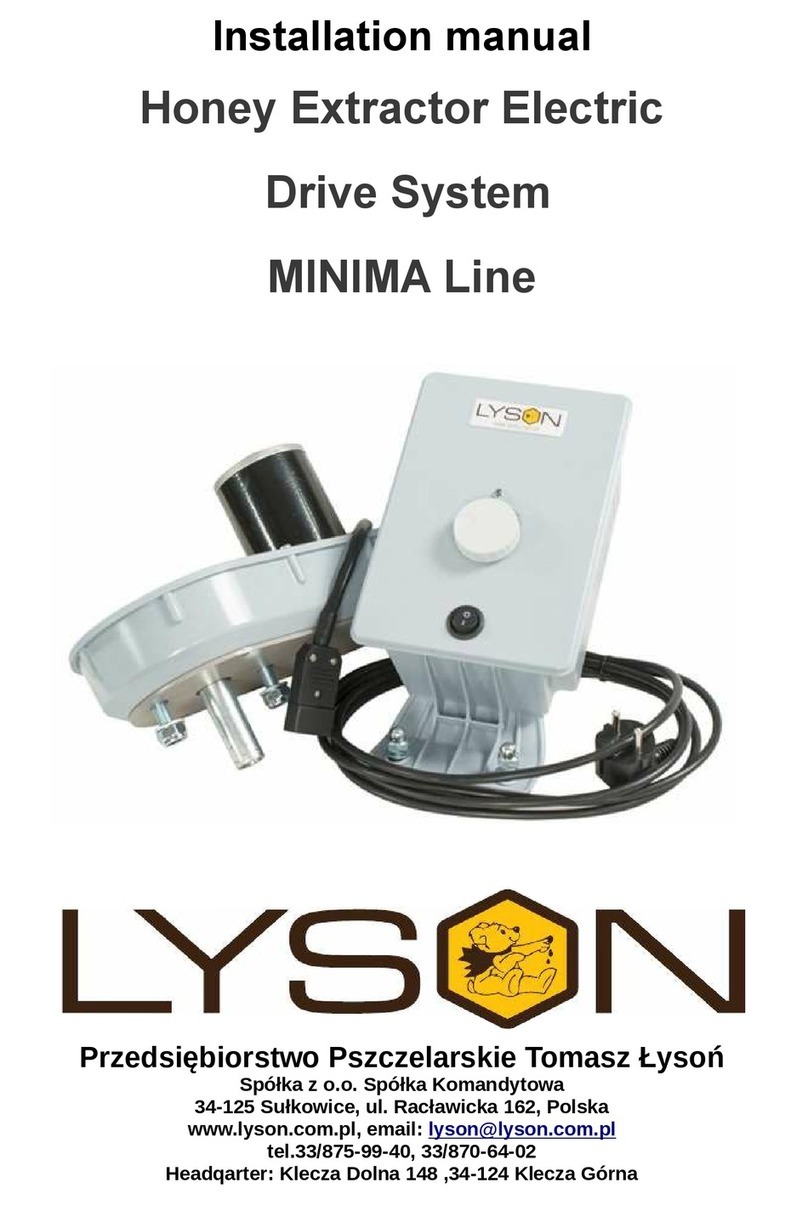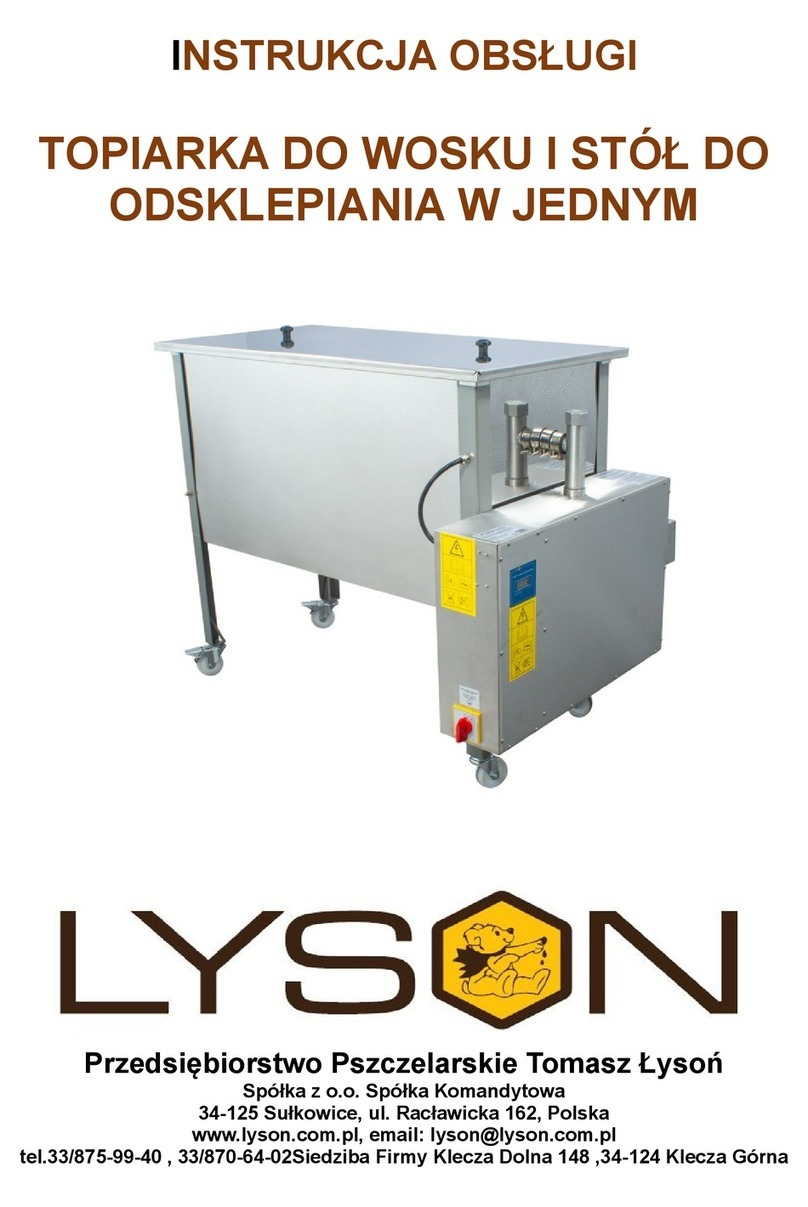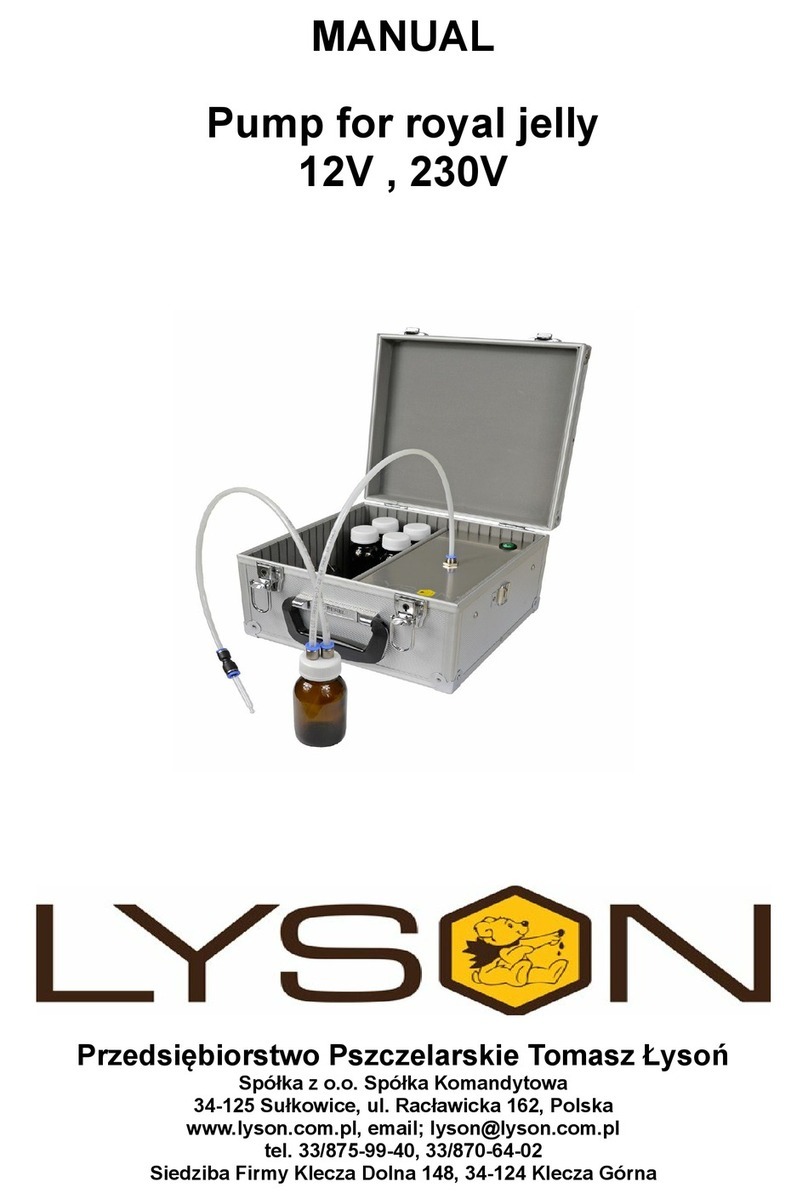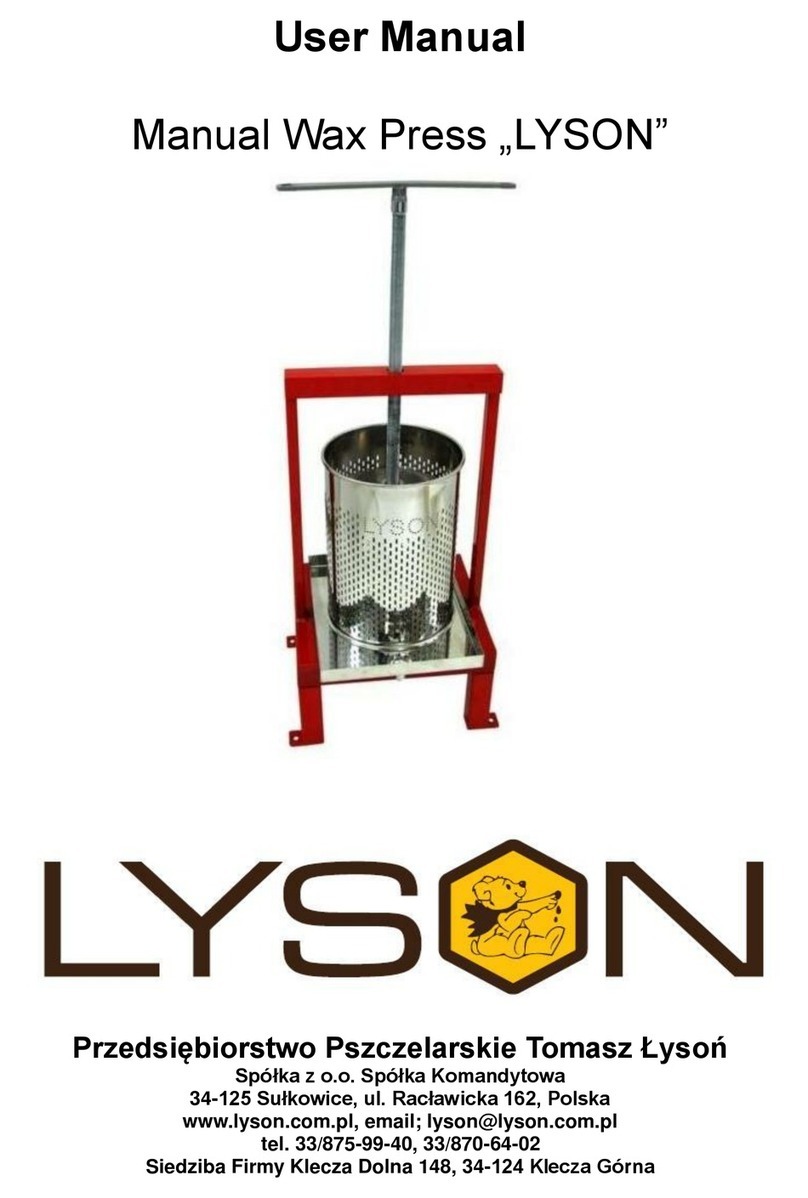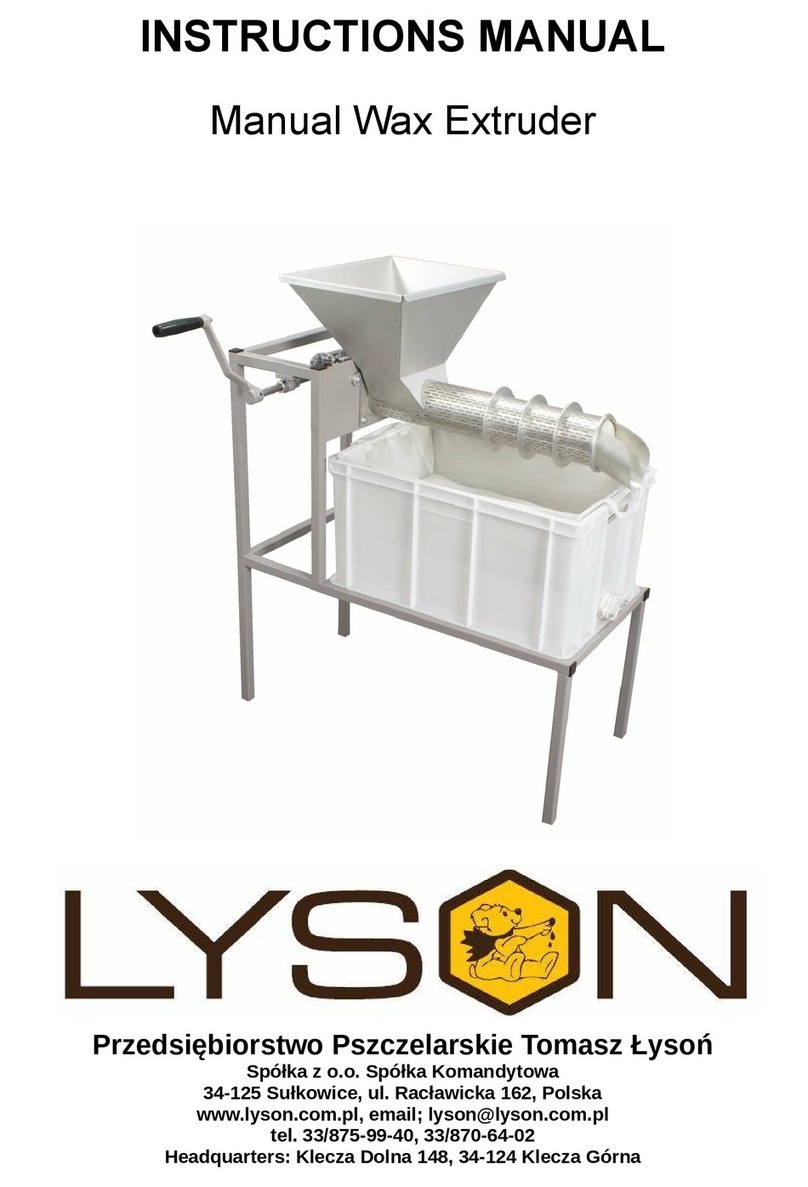5
1. Slightly release the lock screw (item 1).
2. Slightly move the tie (item 2) and set up the primary air
flow in such a way to achieve blue flame optimally (yellow
or red flame indicates wrong settings)
3. Slightly tighten the lock screw (item 1) .
4. After every gas cylinder replacement, the primary air
flow must be regulated again.
Properly performed regulation should provide:
quick and proper burner ignition, re-ignition and mild
flame transfer, non-explosion flame dispersion at all flame
orifices within 5 second at the utmost, slight flame lit-off is
permissible, however after 1 minute the flame should be
stable, non-extinguishing and not getting back into the
nozzle when the thermal power of the burner is changed
along the entire range of anticipated power regulation and
while the hand wheel of the gas cock is turned from
maximum to minimum position with normal speed (the
normal speed , i.e. turning the gas cock hand wheel from
maximum to minimum power lasting approximately 1 s)
WARNING! After each usage the device must always be
cleaned. Prior to cleaning, one must make sure that gas
stool has cooled down - high risk of scalding. Gas flow
must be closed by closing the cocks. In case when the
device is to be rotated during cleaning, it is necessary to
disconnect the gas supplying hose.
(A). Prior to starting the maintenance, device must be
switched off and gas supplying hose disconnected.
(B). Make sure that the device has cooled down.
(C). In order to prevent the damages to the device
surface, it must be cleaned regularly.
(D). Remains of fat or food inside the device may bring
about fire.
(E). The device is to be cleaned with a wet cloth.
(F). Use the neutral cleaning agents only. Never use the
abrasive agents, agents containing caustic substances,
bleaches or acids to clean the gas stool. Using acidic or
alkaline substances must be avoided ( lemon juice,
vinegar, etc) .
(G). Do not clean the device with steam washers.
(H). Once the device has been cleaned, it must be dried.
3. PERIODICAL INSPECTIONS
After the guarantee period has expired, the device must
be inspected at least once a year. Periodical inspections
must be performed by the persons qualified for repairs
and maintenance of gas devices. The minimum inspection
range shall include the control for proper operation, gas
valve maintenance and the tightness tests. Outside the
guarantee period periodical inspections are not included
into the costs of purchasing the device.
Properly prepared burner with the regulator to be
connected to the gas cylinder.
4. OPERATION DESCRIPTION OF A WAX
EXTRACTOR WITH A GAS BURNER
1. Fill the tank with water until the level of the
discharge pipe, as in the figure (Fig. 1). Water losses
must be completed (take special precautions not to get
burnt).
2. Fill the basket with frames or dried honey. .
3. Cover the device with a lid.
4. Place the burner under the device in such a way to
make the flame heat the entire surface of the device
bottom.
5. Wait until steam is formulated and melted wax
flows out.
6. After the batch has been melted, check the water
level and make up for the potential losses.
7. Add the frames or dried honey in the basket.
8. Steps 6 and 7 to be repeated until extraction has
been terminated
9. Once the process has ended, the burner must
be switched off and the gas cylinder closed.






